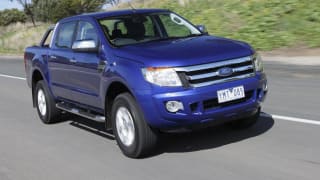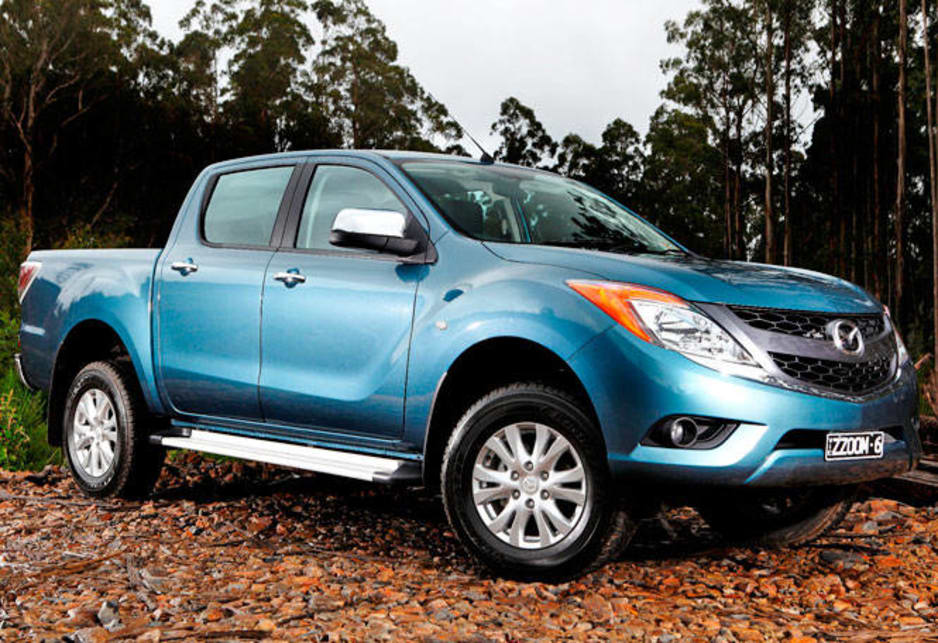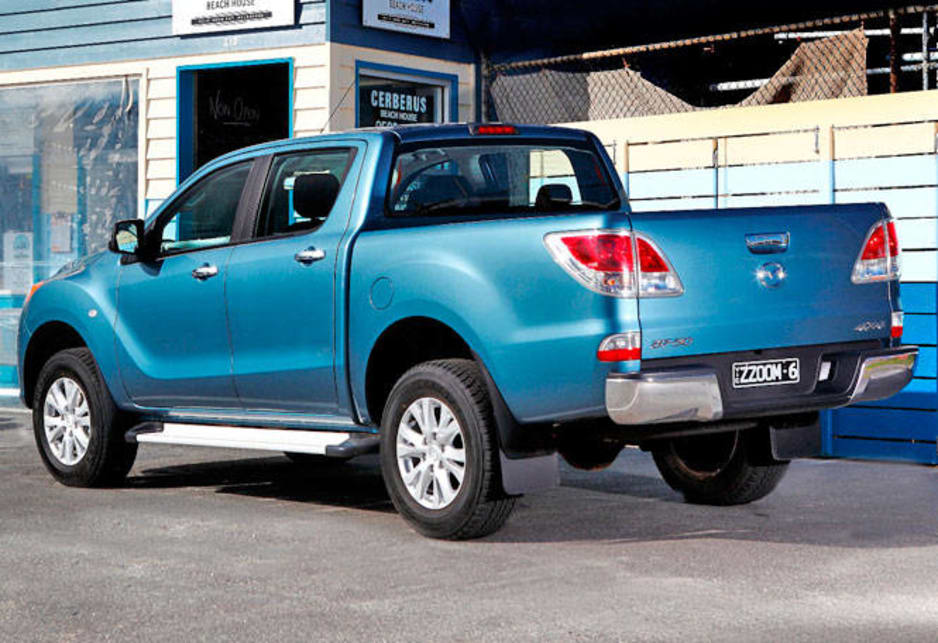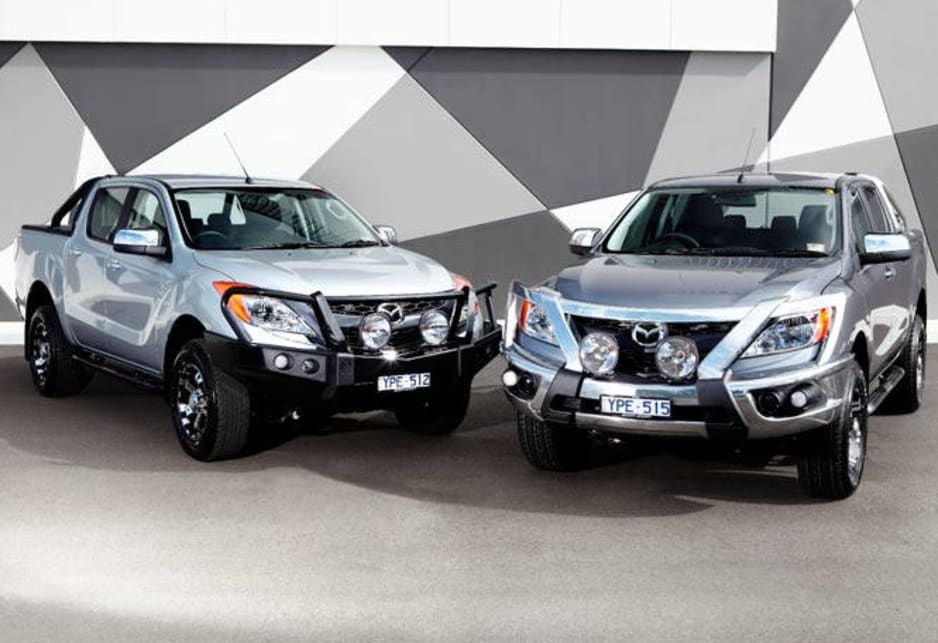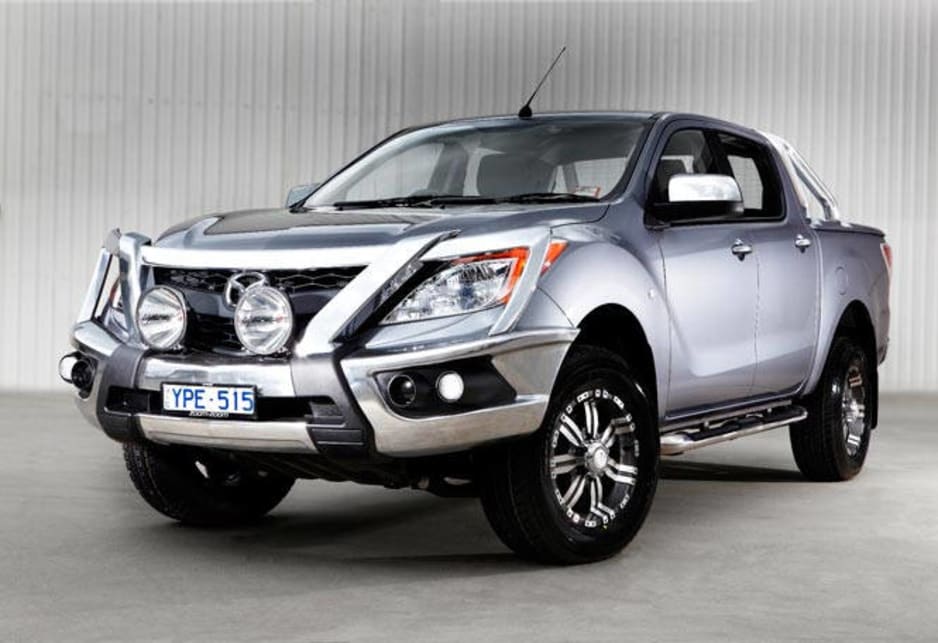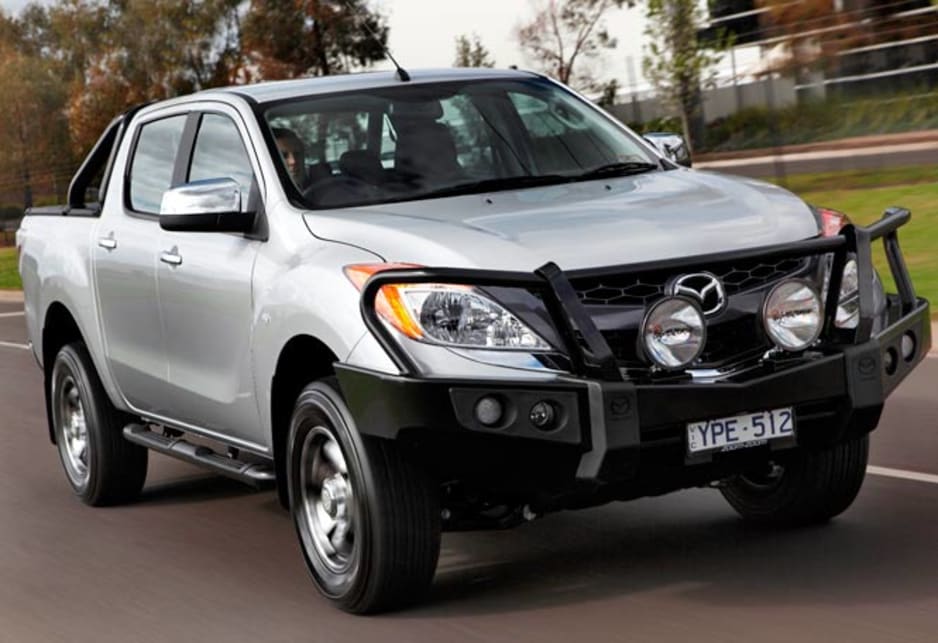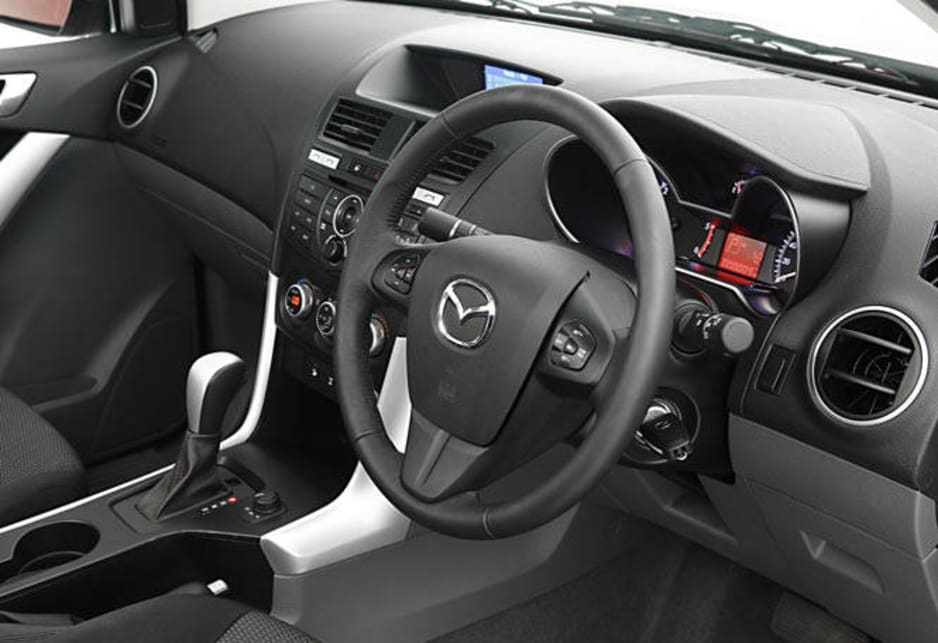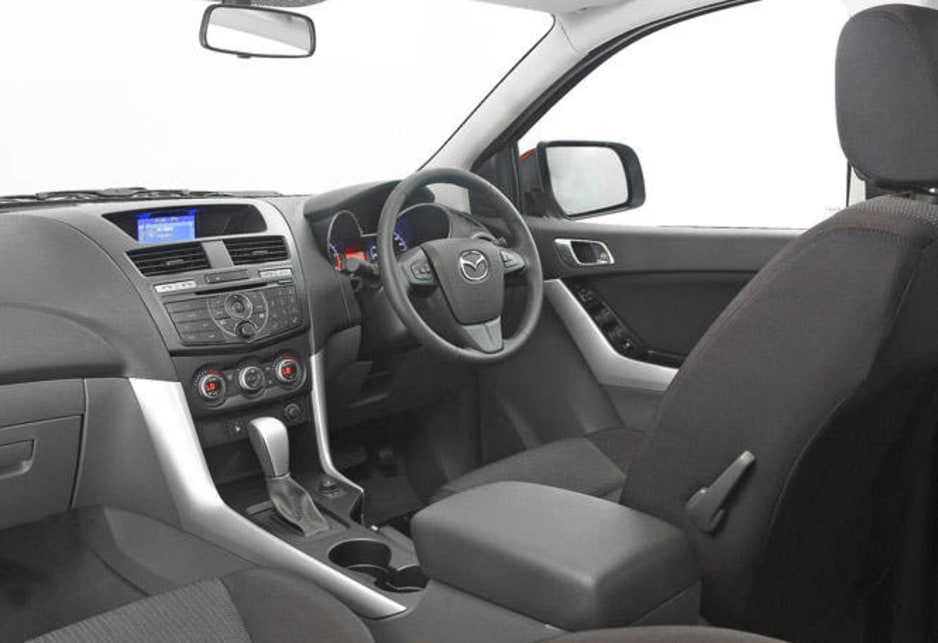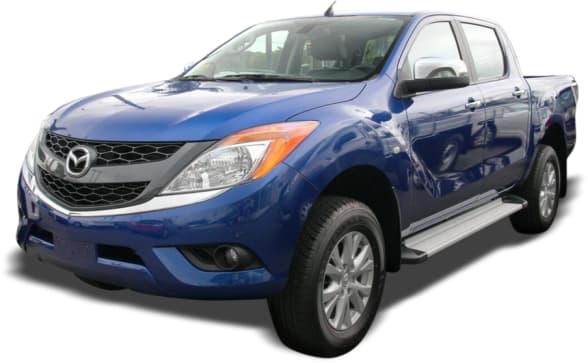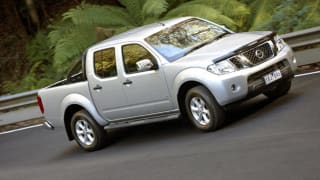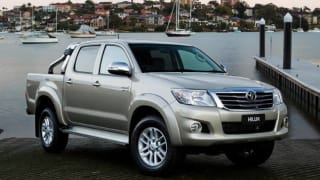The dual-cab light-commercial ute is fast-becoming the 21st century's family wagon and just because it's got a tray, doesn't mean it's a hose-out workhorse.
Although capable of plenty of hard yakka, the new Mazda BT-50. Mazda's BT-50 has often played the poor second cousin to its Ford Ranger twin and the segment's reigning monarch, Toyota's HiLux, but there's less reason for an inferiority complex now.
We had all three recently back to back and it was a close run thing, with the BT-50 ending up in third but in a photo-finish.
Value
Explore the 2012 Mazda BT-50 range
This is where the Mazda scores well - priced from $48,810 for the six-speed manual, the price rises to $50,810 for the same number of ratios without a clutch pedal - several thousand below the equivalent Ranger.
The XTR model is not even the flagship (that's the GT, which is more likely to stand for Grunty Truck than Grand Touring or Gran Turismo) but it gets cruise control, Bluetooth phone link, dual-zone climate control, power windows and mirrors, side-steps, 17in alloys, front fog lights, three 12-volt outlets, a leather-wrapped gearshifter and steering wheel and satnav.
There's a good-quality sound system with single-CD for the six-speakers to utilise, as well as USB and Bluetooth connections, with steering-wheel-mounted controls and a 5in LCD colour screen that also displays the satnav.
Technology
The 3.2-litre in-line five-cylinder engine is chief among the technological highlights, packing 20 valves and an intercooled turbocharger - peak power is 147kW at 3000rpm and torque of 470Nm is on offer from 1750 and 2500rpm. The engine is fed by common-rail direct-injection system with a high-pressure fuel pump delivering fuel at 1800 bar (200 bar up on the outgoing engine) and piezo injectors.
The five-cylinder engine - a first for something with a Mazda badge - claims a thirst of 9.2l/100km, which gives it an easy range in the realm of 850km from the 80-litre tank. Running the six-speed auto is probably the better option, with the massive torque making it unlikely you'll missing swapping cogs yourself, such is the ability of the auto.
Design
If you want a traditional look to your LCV then Mazda is not the place to look - Mazda has gone where Mitsubishi did with the Triton. While it's kissing cousin the Ranger has adopted a squared-off traditional aesthetic, Mazda's load-lugger has taken the family look from the passenger car brigade and stretched it across the front of a big ute.
Few seem to like it, but plenty don't - given the ads for the BT-50s hardly feature a vehicle without a bullbar and other accessories, I figure I'm not the only one who's not a fan. The cabin is less confronting, with more space than the outgoing car, particularly in the rear, which has been endowed with a more comfortable backrest angle.
Safety
A five-star NCAP rating has been awarded to this workhorse - aside from the engineering work on crumple zones and crash performance, the BT-50 has six airbags dual front, front-side and full-length curtains), stability and traction control (with anti roll-over function) and trailer sway control.
The trailer control system uses the same tricks as stability control (braking individual wheels and adjusting engine torque) to counteract any fish-tailing by a towed vehicle. The front seatbelts have pre-tensioners and load-limiters and all five seatbelts are lap-sash jobs. There's also a rear diff lock on offer for the 4WD models.
Driving
These machines are wasted on tradies - anyone who stepped out of a 20-year-old work ute would be double-checking these things had a rear tray. The interior is comfortable and refined for the most part - the children did get a little grumpy at the ride in the back, as the tray wasn't weighed down with a lot, but at least there are proper side-steps for clambering in.
Seat comfort is reasonably good, as is the cabin space - the driver has good fields of vision and is only let down by the absence of reach adjustment on the steering and rear drum brakes, which work fine but might be a little old-tech for some younger new car buyers. The pay off for the firmer ride than its Ford twin is crisper steering and better body control - where much of the segment resorts to leaning heavily and torturing front rubber, the Mazda feels more capable.
It also shrinks around the driver to some extent, feeling smaller than the 5.3m length and 1.8m width listed in the specs sheet. Four-wheel drive can be engaged at speeds up to the state limit, with the back-up of a locking rear diff - although that's only going to be required when the going gets seriously rough, as there's no shortage of off-road ability with 237mm of ground clearance and an 800mm wading depth.
The workhorse side of this vehicle offers decent capacity - the payload is over 1100kg and the maximum braked towing capacity is 3350kg, with old-school leaf springs under the rear.
